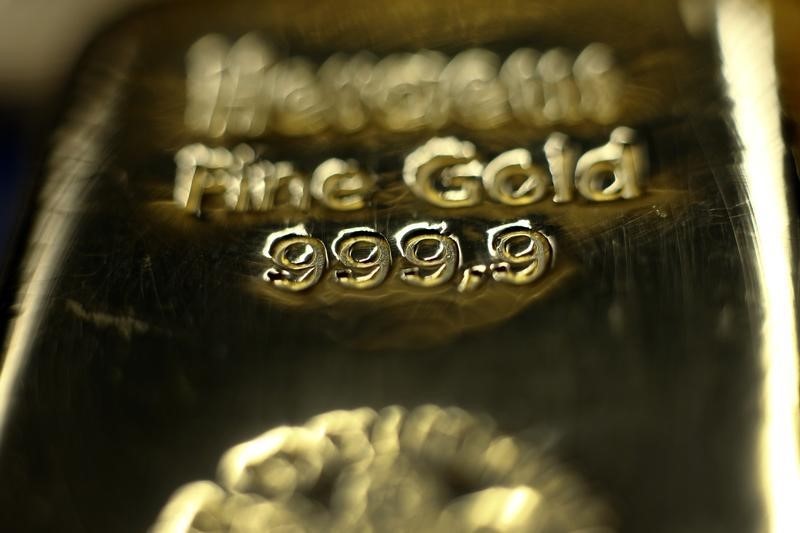Investing.com - Gold futures moved further away from last week's four-month highs on Monday, amid ongoing uncertainty over the timing of a Federal Reserve rate hike.
Gold for December delivery on the Comex division of the New York Mercantile Exchange slumped $11.30, or 0.96%, to trade at $1,171.80 a troy ounce during European morning hours. On Friday, gold lost $4.40, or 0.37%.
Investors have been trying to gauge when the Fed will raise interest rates for the first time in nearly a decade after recent economic reports offered a mixed picture of the U.S. economic growth.
Gold rallied to $1,191.70 last Thursday, the most since June 22, amid speculation the U.S. central bank will not raise rates until sometime next year, with weak economic reports on retail sales and manufacturing activity feeding that view.
However, upbeat data on inflation and consumer sentiment prompted investors to pare bets that Fed policymakers will wait until next year to hike rates.
The timing of a Fed rate hike has been a constant source of debate in the markets in recent months. The U.S. central bank has two more scheduled policy meetings before the end of the year, in late-October and mid-December.
Elsewhere in metals trading, copper for December delivery on the Comex division of the New York Mercantile Exchange shed 1.1 cents, or 0.45%, to hit $2.393 a pound during morning hours in London.
Official data released earlier showed that China’s economy grew 6.9% in the third quarter, slightly better than forecasts of a 6.8% rise but down from growth of 7.0% in the previous three months. The figure is the country's slowest growth rate since the 2009 global financial crisis.
A separate report showed that industrial production rose by an annualized rate of 5.7% in September, below expectations for a 6.0% increase and following a gain of 6.1% in the preceding month.
Data on fixed asset investment also missed forecasts, reinforcing views that Beijing will roll out further support measures soon for the world's second largest economy.
The Asian nation is the world’s largest copper consumer, accounting for almost 40% of world consumption.
